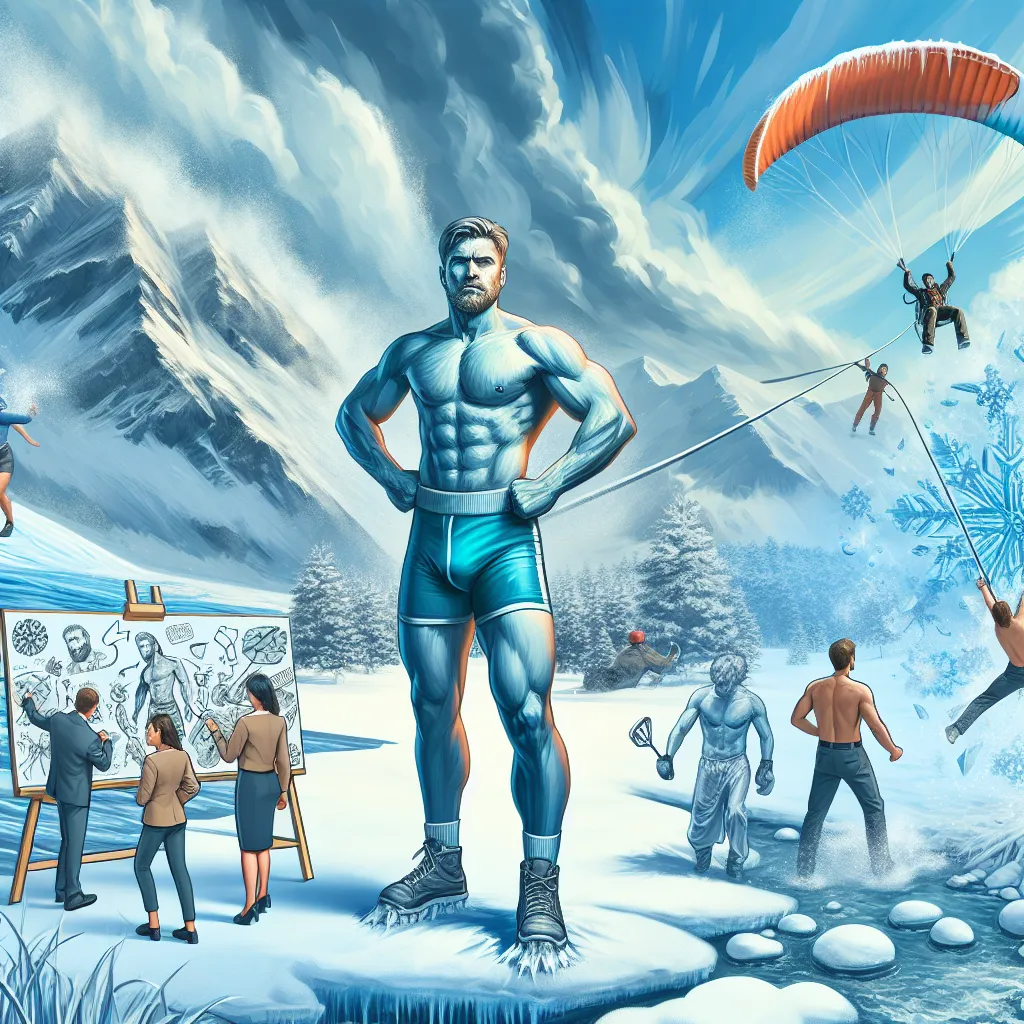Wim Hof, the Iceman, truly lives up to his nickname. Known for his incredible feats in extreme cold, he’s done everything from running marathons beyond the polar circle in just shorts to standing in ice baths for nearly two hours. But Wim is not just a hard-core thrill-seeker; he’s dedicated his life to uncovering how the human body can withstand extreme conditions.
The Wim Hof Method, which combines breathing exercises, gradual cold exposure, and a strong mindset, is revolutionary. With it, people can control their cardiovascular systems and immune responses. Wim believes this method can combat illnesses of all sorts, even the infamous man flu. His ability to maintain his core body temperature while his skin temperature drops close to zero is mind-boggling and has earned him world records.
Although enduring such challenges might sound like an optional thrill, for Wim, it’s about pushing human boundaries. For instance, during a live national TV broadcast from Times Square, Wim stood the test of extreme cold for one hour, 52 minutes, and 42 seconds. It’s fascinating how he manages to stay focused and calm while his body endures what most would find utterly unbearable.
On a different note, stunts aren’t exclusive to the cold; they range from thrilling and dangerous to downright absurd. For example, Matthias Giraud, aka Super Frenchy, takes adrenaline-seeking to new heights with his paragliding rope swings. Practiced in the Columbia Gorge near Oregon, these stunts require meticulous planning, teamwork, and impeccable timing. Not a second can be out of sync, as the risk of a catastrophic failure is high.
Whether it’s parkour gone wrong, silly jumps with vehicles, or insane stunts involving cacti, people never seem to tire of pushing their limits, often for the thrill and sometimes for the sheer joy of overcoming their fears.
Finally, keep an eye on your workplace stunts. Office antics like hyper-focused rubber band holders or trampoline tricks can either be a hilarious distraction or an opportunity for mischief. The rush of pulling off something audacious can be intoxicating but remember, safety first!
It’s clear from these stories that whether on mountains, in cold baths, or even in offices, the thrill of the stunt and the celebration of human resilience continue to capture our imaginations.






